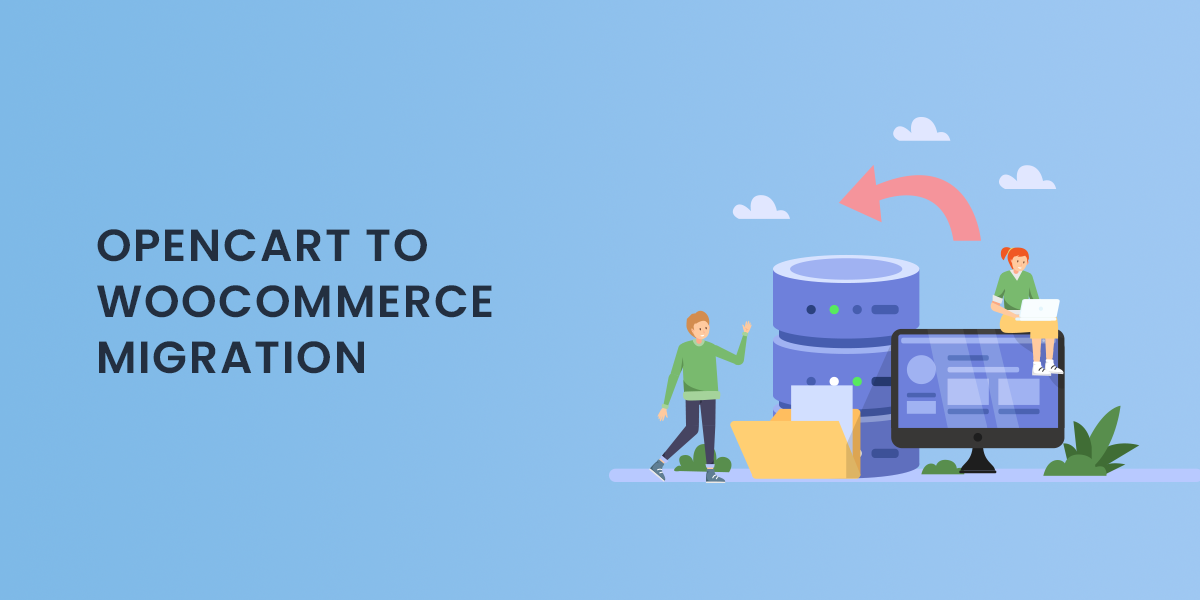Why Migrate from OpenCart to WooCommerce?
Migrating from OpenCart to WooCommerce is an efficient way for eCommerce businesses to gain access to enhanced customization options, a vast plugin ecosystem, and greater flexibility in managing their online stores. Here’s a comprehensive guide on how to transition smoothly from OpenCart to WooCommerce.
Why Migrate from OpenCart to WooCommerce?
WooCommerce offers better functionality for growing eCommerce businesses by providing extensive plugin support, easier customization, and a broader community for support. OpenCart, while robust, may not offer the same level of customization and flexibility, particularly for businesses aiming for scalability.
- User-Friendly Interface: WooCommerce’s WordPress-based interface is familiar and user-friendly, making it easy to manage products, orders, and customer data. OpenCart can be less intuitive for those unfamiliar with its setup.
- SEO and Marketing Capabilities: WooCommerce benefits from WordPress’s SEO optimization capabilities, giving stores greater visibility. It integrates easily with marketing plugins, allowing businesses to enhance their marketing strategies.
- Customization and Extensions: WooCommerce boasts thousands of plugins that enable businesses to customize almost every part of their store. OpenCart’s extension range is more limited in comparison, which can make certain customizations more complex.
Preparing for Migration
Before migrating, it’s essential to ensure that your data is secure and backed up. Here’s how to prepare:
- Back Up OpenCart Data: Always back up all your OpenCart data, including product details, customer information, orders, and categories, so you can recover it if needed.
- Set Up Your WooCommerce Store: Install WordPress and set up WooCommerce on your new hosting provider. This involves installing plugins, setting up payment gateways, and configuring the layout of your store.
- Review Plugin Compatibility: Check WooCommerce’s plugins and themes to ensure they match the functionality you need, and identify the necessary plugins for your business.
Data Migration Process
Migrating from OpenCart to WooCommerce requires transferring key data elements like products, customers, and orders. Here are the steps:
- Product Migration: Transfer product data, including names, SKUs, images, prices, descriptions, and stock status. Ensure that product categories and attributes remain consistent.
- Customer Migration: Migrate customer details, including names, email addresses, addresses, and any order history. WooCommerce allows integration with various CRM systems to enhance customer management after migration.
- Order Migration: To keep financial records accurate, transfer historical orders to WooCommerce. Include all relevant data like order IDs, statuses, and order totals.
- Other Data: Depending on your needs, you may want to transfer additional data like coupons, shipping information, and tax settings to WooCommerce.
Using automated tools like Cart2Cart or LitExtension can simplify this process, as these platforms offer guided data migration and help ensure accuracy.
Testing Your WooCommerce Store
Once the migration is complete, it’s crucial to test your WooCommerce store before making it live. Here’s a quick testing checklist:
- Product Listings: Check that all product information, images, categories, and prices have transferred correctly.
- Order and Checkout Process: Test the checkout process to ensure that payment gateways are working properly. Validate that shipping methods and tax calculations are configured correctly.
- Customer Accounts: Verify that customer data has transferred accurately, and check account access for registered users.
- SEO Setup: Use SEO plugins to configure URLs, meta descriptions, and product titles to maintain your OpenCart site’s search engine rankings.
Final Steps: Going Live and Optimization
- Redirect URLs: Set up 301 redirects from your OpenCart URLs to your WooCommerce URLs to ensure that traffic from old links redirects correctly to the new store, preserving SEO.
- Optimize Site Speed: Since WooCommerce is more plugin-heavy, optimizing speed is essential. Use caching plugins and consider a Content Delivery Network (CDN) to enhance site speed.
- Enable Security Measures: WooCommerce’s popularity makes it a target for potential security threats. Use security plugins and ensure regular backups to protect your site.
- Announce the Migration: Inform customers about the migration to avoid any confusion and highlight any new features or improvements in the shopping experience.
Wrapping Up
Migrate OpenCart To WooCommerce provides an opportunity to expand your store’s capabilities and take advantage of WooCommerce’s extensive resources. By following a well-planned approach, securing your data, and optimizing your new store, you can enjoy a smoother transition that ultimately enhances your store’s performance, flexibility, and scalability.














Post Comment